Gardenia from the Marenova family appeared on the window sills of dwellings in moderate latitude from the climatic zones of Asia, where today more than 250 of its varieties grow. At home, only one species is popular - jasmine gardenia, which is a lush bush up to 50 cm high. Despite the popular belief that this "bouquet in a pot" dies after flowering, the culture, with proper care, can become a permanent resident of the house.
Material Content:
Gardenia jasmine: features of cultivation
Gardenia usually appears in the apartment as a living bouquet of shoots covered with glossy dark green leaves and large flowers with a pleasant aroma.
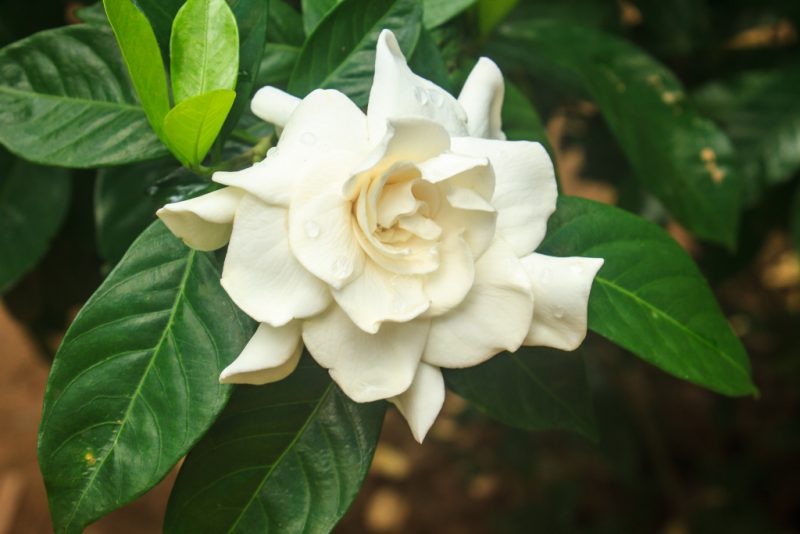
To preserve this gift of nature and admire its flowering for many years, one should take into account a number of parameters, the provision of which the flower needs very urgently:
- plentiful and soft lighting;
- increased acidity of the soil;
- moderate temperature conditions;
- high humidity, especially during the period of active growth;
- systematic irrigation with standing and warm water;
- timely nipping new and pruning old shoots.
Flower transplant after purchase
After acquiring gardenia, it is recommended to transplant it from a substrate of unknown composition and a miniature pot in which the flower was in the store.The procedure should be carried out 14-20 days after the appearance of the plant in the house, so that it has time to acclimatize under new conditions and not experience double stress.
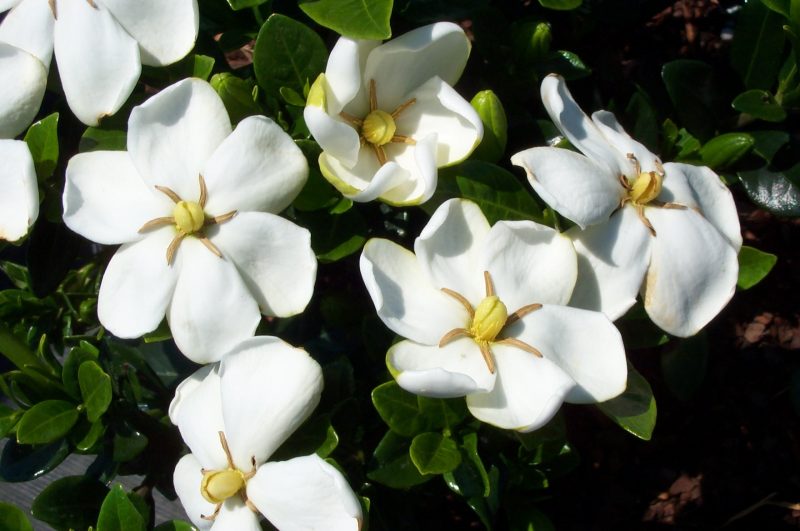
When transplanting, the following manipulations are performed:
- At the bottom of the pot is placed drainage of gravel or expanded clay.
- Coarse sand is poured over the drainage layer.
- The plant is removed from the shipping container.
- The root system is carefully cleaned of the old substrate so as to avoid injuries.
- The roots of the transplanted flower are covered with light soil with a loose structure and acid reaction.
Attention! If the plant was bought in a flowering state, then you should know that when transplanting, under stress, the flower can lose buds.
Care for jasmine gardenia at home
The long life of gardenia and its long flowering directly depend on the competent implementation of care measures.
More materials:gardenia jasmine at home
Jasmine gardenia soil
The plant is intolerant of calcareous soils. For the full development of gardenia, it is necessary to ensure the acidity of the soil in the range of pH 4.5-5.5. This indicator can be achieved using ready-made soil for azaleas or composed independently of turf, coniferous, leafy lands, peat, humus and sand in equal parts.
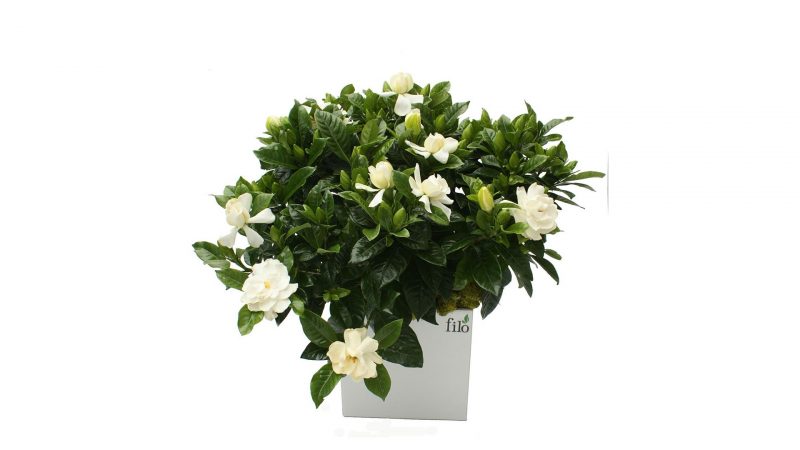
Advice! In the future, to maintain the required level of soil acidity, you can resort to watering the flower with water infused with peat, or with the addition of citric acid.
Lighting and location
The photophilousness of the plant makes a prerequisite for providing abundant and long-lasting lighting without direct sunlight.
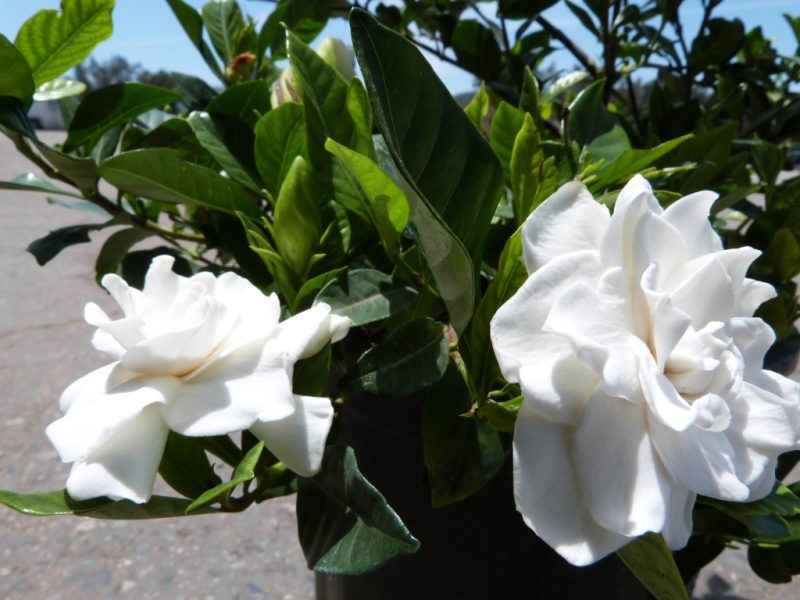
In winter, while reducing the duration of daylight hours, it is recommended that the flower organize additional sources of artificial light. When placing a gardenia pot, preference should be given to the windowsills of the eastern and western windows open to the soft sun.
Important! Changing the position of the pot and the lighting mode can cause the buds to reset.
Temperature mode
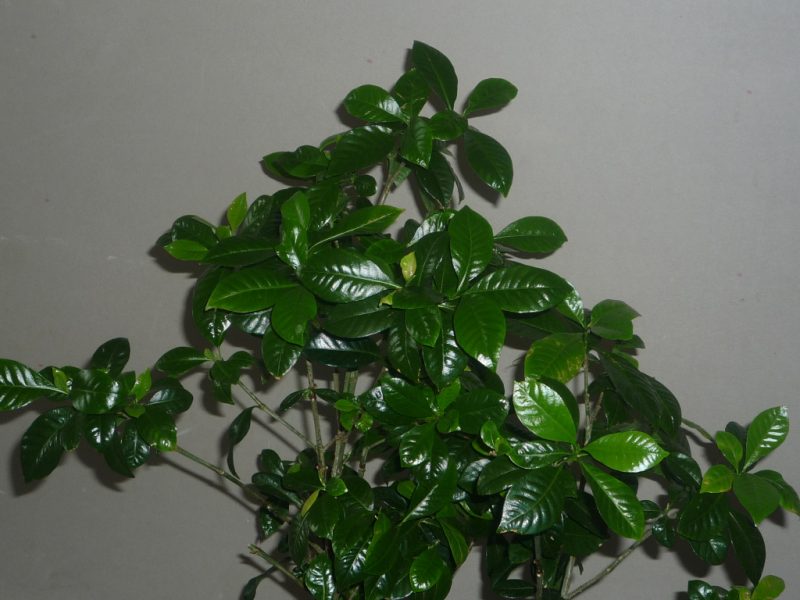
For thermophilic gardenia, it is necessary to provide a moderate temperature regime:
- in the spring-summer period - 22-24 ° C;
- in winter 18–20 ° C.
The health and flowering of a flower depends on maintaining optimal temperature values. The buds are planted at a temperature of 18 ° C, but lowering the mercury column below the 16 ° C mark can lead to hypothermia of the gardenia roots and its death.
Watering the plants and humidity
Gardenia needs air and soil moisture, in which the earthen lump must be constantly moist, and the level of humidity is quite high.
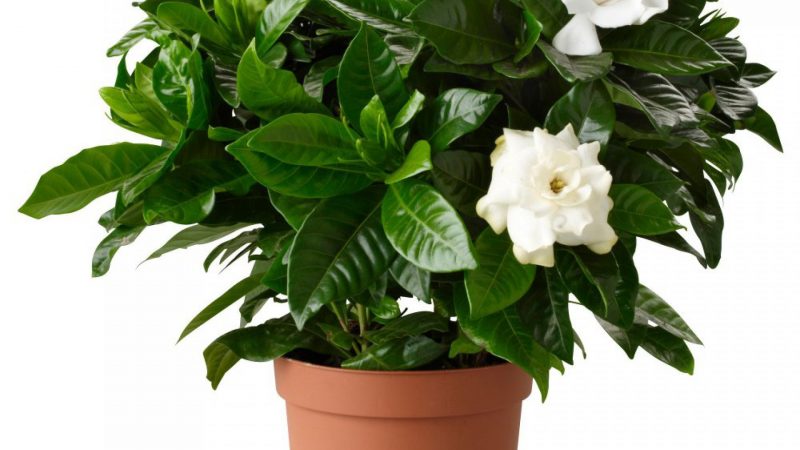
Abundant water procedures due to intolerance to gardenia lime are carried out by standing water at room temperature. During the period of active development and budding, a container with water is installed near the flower pot, and daily spraying is also carried out.
Fertilizer and fertilizer
From the beginning of spring to mid-autumn, gardenia is fed with liquid mineral fertilizers, which increase the acidity of the soil, twice a month. When diluting the working solution, the concentration is used half as much as indicated on the package.
Nipping and transplanting
Plants of this culture are transplanted every two years in the early spring. Pinching of young shoots is carried out during the growing season, which stimulates the branching and laying of new flower buds.
Rules for care after flowering

The main activity in this phase is cropping. After flowering is complete, the shoots should be shortened by half the length. Thinning is also carried out at this time, old, weak shoots growing inside the bush are removed.
Pests, diseases and methods of dealing with them

Gardenia is often attacked by such dangerous and common pests as thrips, mealybug, spider mite and aphids.If signs of one of the harmful insects are detected, the plant is subject to immediate treatment with an insecticide according to the manufacturer's instructions. With a strong population, you may need to re-spray, which is carried out after 10-12 days, depending on the toxicity of the drug.
Gardenia propagation
A lush bush with fragrant flowers, contrasting with the background of dark greenery, propagates by both seed and vegetative methods.
How to grow jasmine gardenia from seeds?
It is believed that jasmine gardenia from seeds is more adapted to home conditions, and therefore more durable. However, the seed method of breeding is more time-consuming and less productive than vegetative.
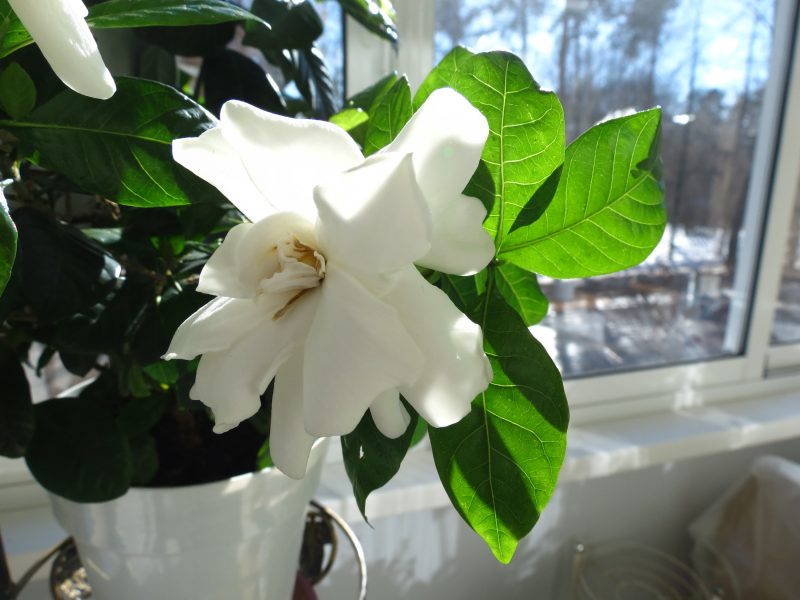
But if the grower has decided, then the reproduction algorithm is as follows:
- Seeds are purchased at the flower shop.
- A shallow drawer for seedlings is selected, at the bottom of which is placed drainage from broken construction material, gravel or gravel.
- The drainage layer is covered with azalea soil or another light substrate with the same acidity.
- Seeds are distributed over moistened soil and slightly crushed by a dry substrate.
- The container is covered with a film and moved to a warm, bright place, where it is organized lower heating, as well as systematic ventilation and humidification.
- When shoots appear, the film is removed.
- Picking is carried out after the formation of seedlings of 2 pairs of true leaves.
- When the seedlings get stronger and grow, they are planted in individual pots of small diameter
Cuttings
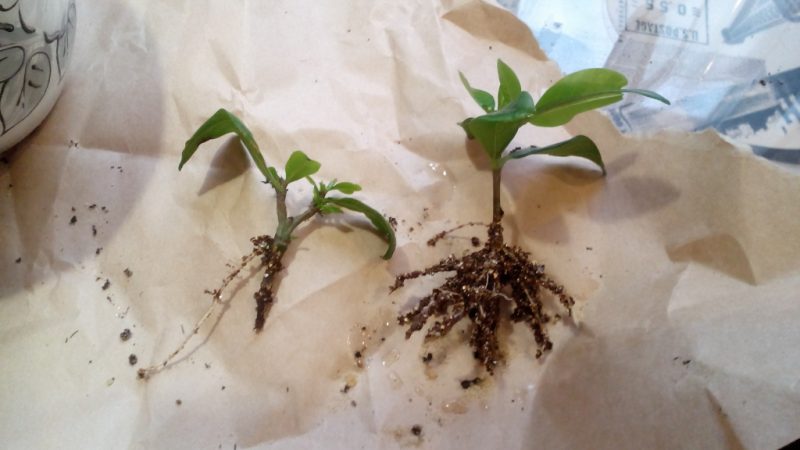
A popular and most productive method in which the following actions are performed:
- In early spring, apical cuttings 10 cm long are cut.
- Slices of the cuttings are treated with growth stimulants to accelerate root formation.
- Planting material is placed in a warm substrate with a slightly acid reaction.
- Rooting is carried out in a mini greenhouse made of glass.
- With a successful result, when the young plant reaches a height of 15 cm, the first pinch is carried out, stimulating the growth of side shoots.
Gardenias blacken, fall, leaves turn yellow - the reasons
Gardenia is a rather capricious plant, so flower growers often encounter certain difficulties when growing it.
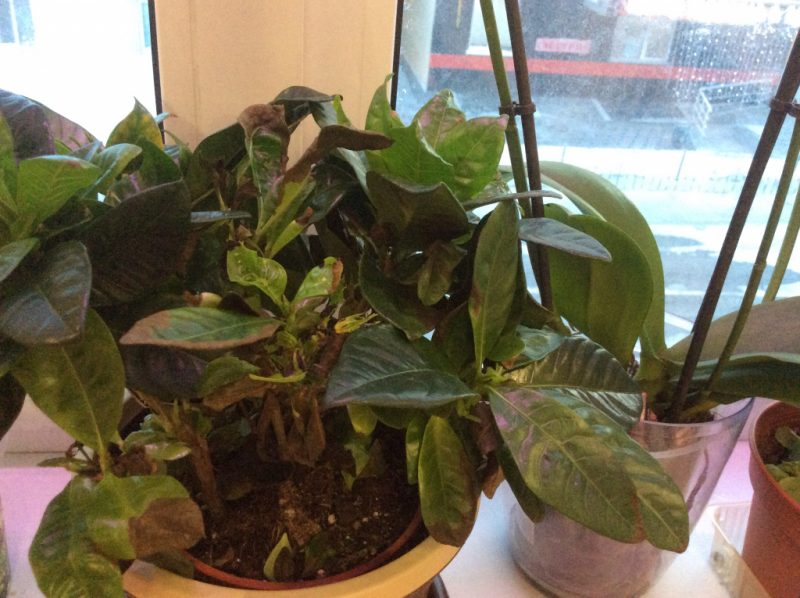
- The gardenia leaves turn black and fall. The cause of the problem lies in the overcooling of the culture, which could be triggered by a sharp drop in temperature or the use of cold water during irrigation.
- Leaves turn yellow and fall. The situation is caused by a lack of soil and air moisture.
- Leaves wither, and the plant wilts. This is due to a drop in temperature below the permissible value.
- The buds are falling. The problem can occur for a number of reasons: insufficient lighting, movement of the pot, dry air.
So we found that jasmine gardenia is a beautiful and abundantly flowering plant. Despite the exactingness and waywardness, it will thank its owner with high decorative qualities and an exquisite aroma in exchange for competent and systematic care.












